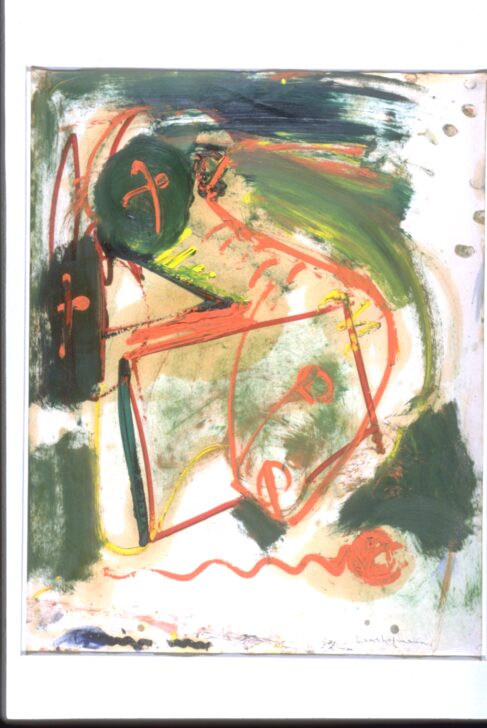Untitled
Hans Hofmann

Description
The career of Hans Hofmann, the only artist of the New York School to have experienced firsthand the development of Modernism in Europe, spanned two generations and two artistic worlds. For many years he was a teacher, and his dissemination of ideas from the artistic revolution that took place in Paris from 1905 to 1915, along with his technical virtuosity and distinct personal style, had a major influence on the American avant-garde of the 1930s and 40s.
In the 1940s, many New York artists re-evaluated the theories and practices of Surrealism. Though Hofmann could not subscribe to the philosophical foundation of this style, he was intrigued by its spontaneity. He began to experiment with compositions consisting of linear skeletons of poured and dripped paint, which he created in immediate response to the behavior of the paint itself. Gradually these "poured" lines and webs of paint were replaced by quick, free lines drawn with a crayon or a brush, which were later complemented with painted areas. These drawings were still dependent upon the artist's momentary inspiration: "My work is not accidental and not planned," he said. Hofmann called the resulting series of mid-sized works on paper "free creations."
In this work, Hoffmannn’s method of building up the surface through a series of free lines and painted areas is clearly visible. An energetic hand is at work, as well as a sense of the spontaneous and the automatic, and vibrating colors activate the composition. Gesture and pigment are one, and yet a binding structure exists beneath the form and color.
Sean M. Ulmer, University Curator of Modern and Contemporary Art, on the occasion of the exhibition The New York School: Abstract Expressionism and Beyond, July 20, 2002 – January 19, 2003
Usage Rights:
If you are interested in using an image for a publication, please visit https://umma.umich.edu/request-image/ for more information and to fill out the online Image Rights and Reproductions Request Form.